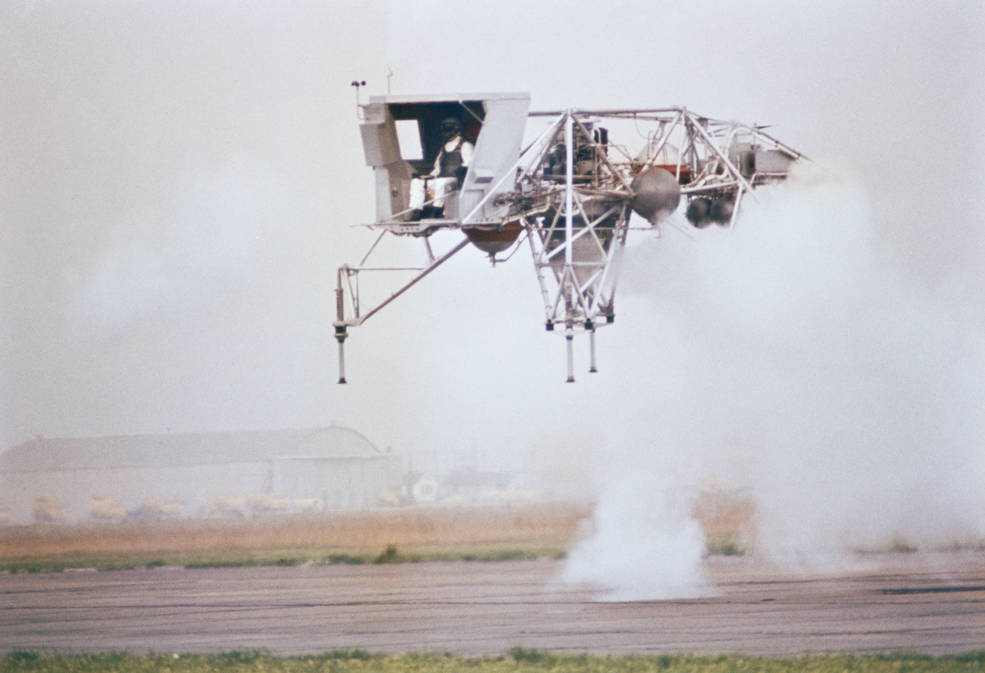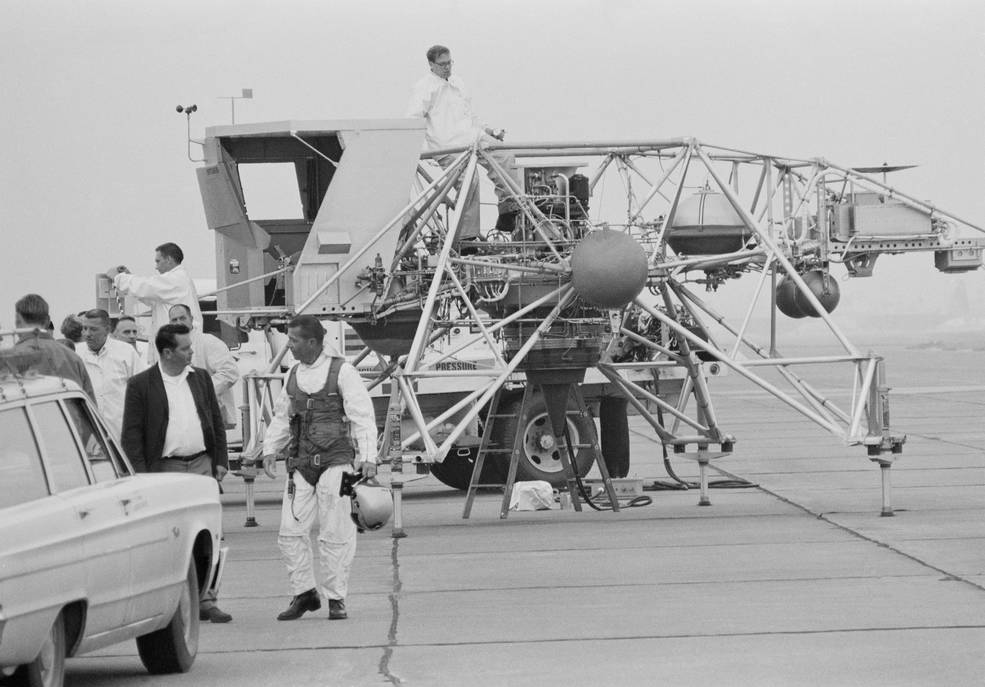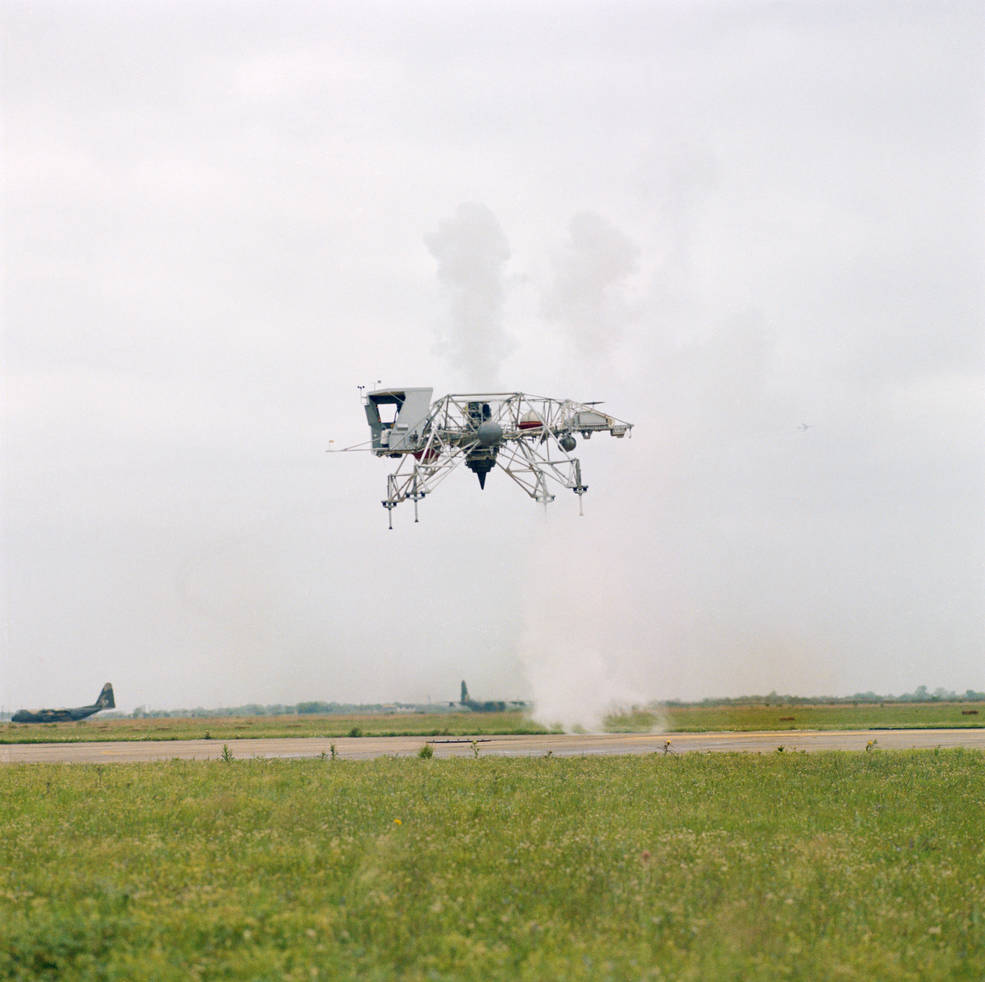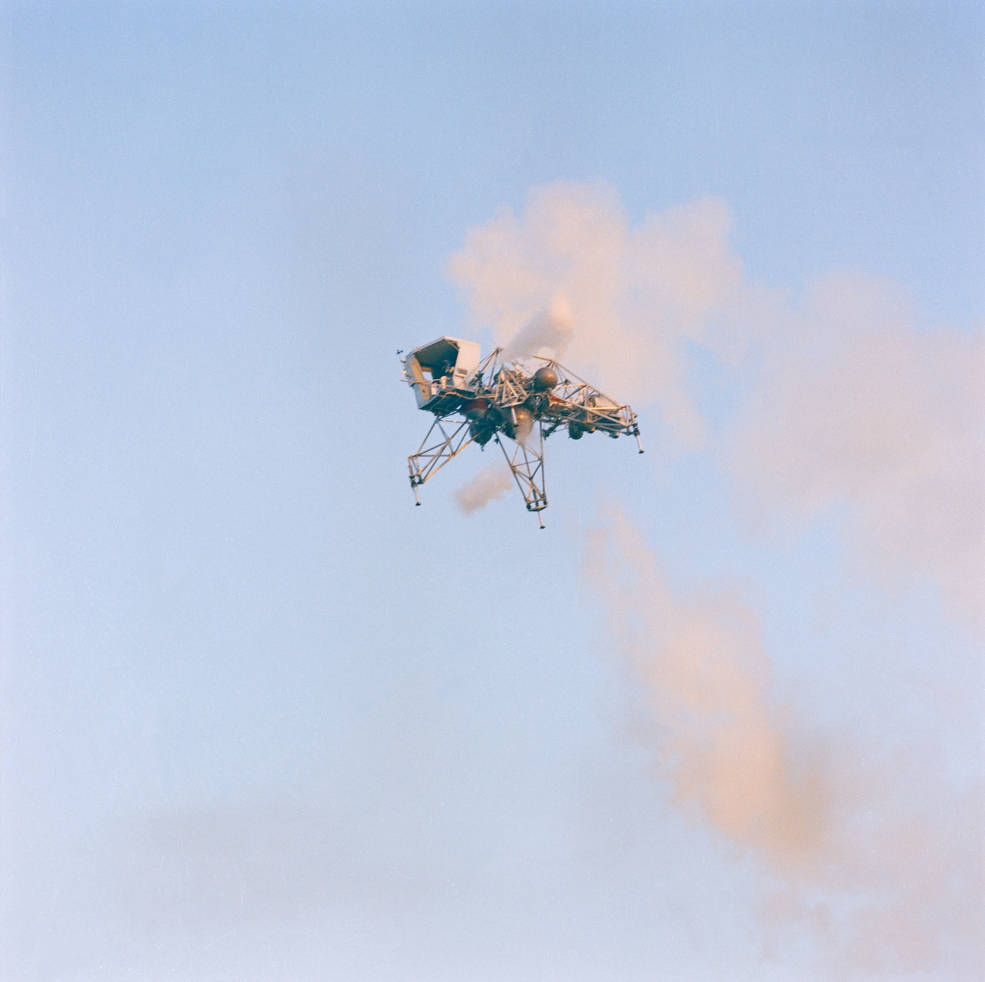On April 7, 1969, the Lunar Landing Training Vehicle (LLTV) resumed flight operations at Ellington Air Force Base near the Manned Spacecraft Center (MSC), now the Johnson Space Center in Houston. The LLTV was a critical tool for astronauts training to land on the Moon, serving as a high-fidelity simulator of the Lunar Module’s (LM) flying characteristics, especially of the final 500 feet of the descent. Bell Aerosystems of Buffalo, NY, built three copies of the LLTV, delivering them to Ellington late in 1967. As astronaut Neil Armstrong later described the vehicle, “It was a contrary machine, and a risky machine, but a very useful one.” The first man to pilot a LM to the Moon’s surface had personal experience with the fickle nature of the training vehicle. On May 8, 1968, while flying a predecessor of the LLTV called the Lunar Landing Research Vehicle (LLRV) Armstrong ejected from the craft when sensors failed to tell him that he was out of attitude control fuel and he lost control of the vehicle. He parachuted to safety but the LLRV crashed and was damaged beyond repair. On Dec. 8, MSC Aircraft Operations Office Chief Joseph S. “Joe” Algranti also had a close call when he ejected from LLTV-1 just moments before it too crashed.
Following investigations into the crashes, NASA managers held a Flight Readiness Review (FRR) for LLTV-2 on March 10, and identified some open work before agreeing to resume flights with test pilots. During a second FRR on March 31, managers were satisfied with the changes made and decided to allow pilot flights to resume. A series of 12 pilot flights were planned before clearing the LLTV for astronaut training flights. One of the changes made to the vehicle since the crashes was to increase the output of each of the 16 attitude control thrusters from 60 pounds to 90 pounds to give the pilots better handling.


Left: Pilot Ream flying LLTV-2 on its first flight after flights resumed in April 1969. Right: Ream walking away from LLTV-2 after the successful flight.
MSC pilot Harold E. “Bud” Ream, a veteran of 35 previous LLRV and LLTV flights including LLTV-2’s first two flights, was at the controls on April 7. He first hovered the vehicle at about 50 feet altitude to check out its systems and evaluate its flying characteristics with the increased thruster output. Then he flew the vehicle through three takeoffs and landings, with each cycle using up about 200 pounds of the total of 735 pounds of hydrogen peroxide fuel loaded into the propellant tanks. The incremental decrease in mass provided an opportunity to evaluate the LLTV’s flying characteristics over a range of weights. This first flight met all test objectives. A series of flights of LLTV-2 through early June expanded the operational envelope of the vehicle and resolved electromagnetic interference issues with Air Force radars at Ellington that were discovered during the flight test program.


LLTV-2 test flights on April 10 (left) and April 14 (right) at Ellington AFB.
Management cleared astronauts to fly LLTV-2 in June 1969, and Armstrong completed his training flights just four weeks prior to the Apollo 11 mission. He made 21 flights in the LLRV prior to the May 1968 crash and 8 in the LLTV in June 1969. Armstrong credited this valuable experience with being able to successfully guide the LM Eagle to the lunar surface on July 20, 1969, meeting President John F. Kennedy’s goal of landing a man on the Moon before the end of the decade.
For additional first-hand accounts, also read oral histories with Charles R. Haines, LLTV Program Manager in the Aircraft Operations Office between 1969 and 1973.
For more on the LLRV and LLTV, read https://www.hq.nasa.gov/alsj/LLRV_Monograph.pdf
























